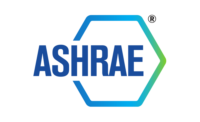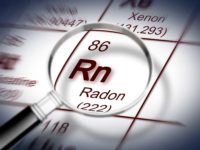The COVID-19 pandemic has created massive disruption economically, socially, politically, personally, etc. As of Aug. 11, 203.9 million cases of COVID-19 have been reported worldwide with 4.3 million deaths — an average of more than 10,000 per day.
As the virus first emerged, numerous global organizations and associations responded with suggestions and recommendations in response to the pandemic, including the U.S. Centers for Disease Control and Prevention (CDC), the World Health Organization (WHO), and more. Among these organizations, the ASHRAE Epidemic Task Force (ETF) established itself as a leader on behalf of the built environment and did so at the speed of need, not the speed of business.
Airborne Assumptions
ASHRAE officially created the ETF in March 2020. It currently has 22 members who oversee teams and has been successful at providing guidance on HVAC systems to the engineering industry and public at large.
In April 2020, the ETF assumed its leadership position by suggesting there was sufficient likelihood that COVID-19 could be transmitted through the air and that precautionary measures should be taken. Both ASHRAE and the Federation of European Heating, Ventilation, and Air Conditioning Associations (REHVA) issued guidance positions solidifying this opinion.
On the other hand, it took a very long time for other public health organizations to make the same move, as the CDC didn’t admit there were circumstances where indoor transmission could occur in closed spaces until October 2020, and the organization didn’t release an official statement that close-range transmission was affected by aerosols until May 2021.
The keystone of the ETF’s guidance is included in the group’s “Core Recommendations for Reducing Airborne Infectious Aerosol Exposure.” These guidelines are based on the concept that ventilation, filtration, and air cleaners can be deployed flexibly to achieve exposure reduction goals subject to constraints that may include comfort, energy use, and costs. This is done by setting targets for equivalent clean air supply rate and expressing the performance of filters, air cleaners, and other removal mechanisms.
The ETF’s core recommendations stretch much further than this broad statement, offering guidance on numerous topics, including ventilation, filtration, air cleaning, air distribution, HVAC system operation, commissioning, and more. The ETF has since implemented a website that includes numerous resources, including infographics, one-page guidance documents, position papers, answers to frequently asked questions, and much more.
Future ETF Considerations
As the delta variant has proven more infectious than the COVID-19 virus, it appears this pandemic is not going anywhere anytime soon. Accordingly, the ETF must continue to evaluate how the virus is transported and explore how HVAC systems can be best utilized to mitigate its spread.
Numerous concerns regarding equivalent outdoor airflow rates and air distribution remain. Looming questions must continue to be explored, such as: Are six air changes enough in a medical facility (per ASHRAE Standard 170)? Can ventilation rates be effectively tied to infection rates, via Wells-Riley or other methods, or are there too many variables at play (filtration, susceptibility of the occupants, emission rates, time an occupant is present, etc.) to establish a consistent stat? Can an “epidemic model” be constructed to calculate the probability of a person’s infection based on a community’s background infection rate and a facility’s equivalent ventilation rate (amongst numerous other factors)?
Future Engineering Considerations
While the ETF can (and will) continue to conduct the symphony of mitigation, HVACR engineers must diligently tune and play their instruments to the best of their abilities. This means shifting the focus solely from cost and energy use to examine more of the health, productivity, and educational benefits of indoor environmental quality (IEQ) and thermal comfort. Thus, the coordination between energy and IEQ standards must be more collaborative in nature rather than competitive. This can be achieved at all levels, from the society’s standard committees to the consulting and specifying engineers who are calling the shots to the engineers in training still earning their stripes.
Finally, there has to be a shift in the perception that we can’t afford the cost of infection control. That is no longer a valid statement – there’s too much at stake.
Despite the path of destruction levied by the coronavirus and its multiple variants, this storm will eventually pass. Thankfully, as an industry and country, we're in a much better place due to the diligence of the ETF.





